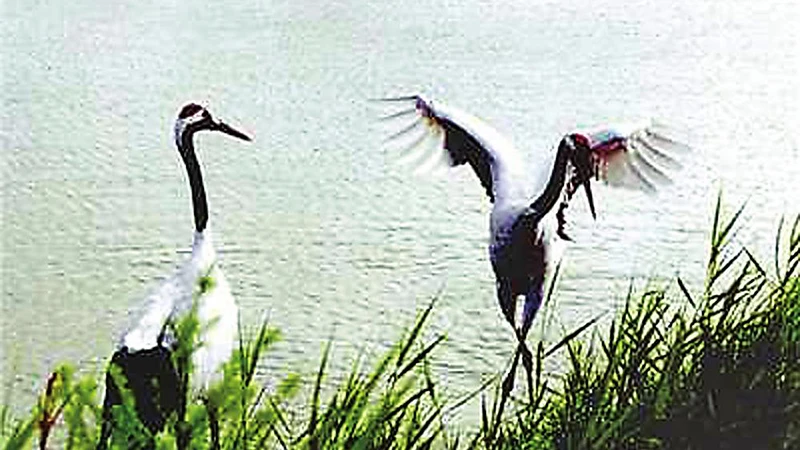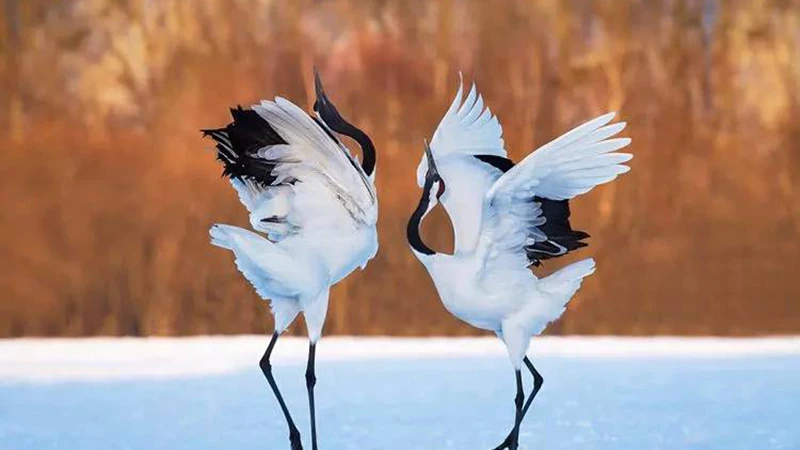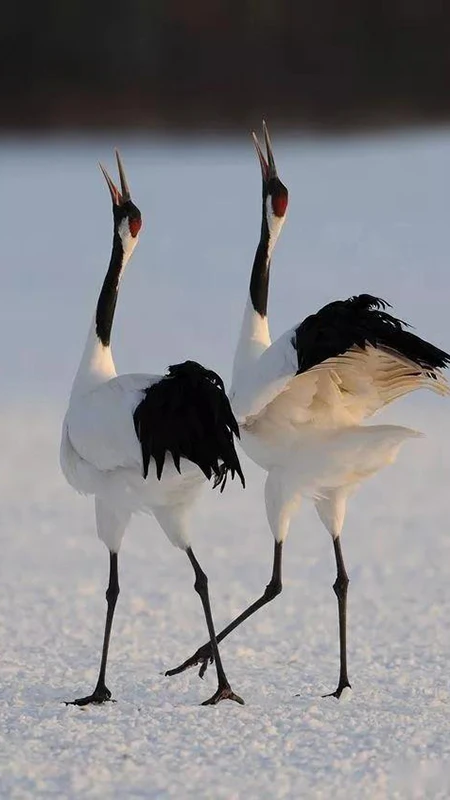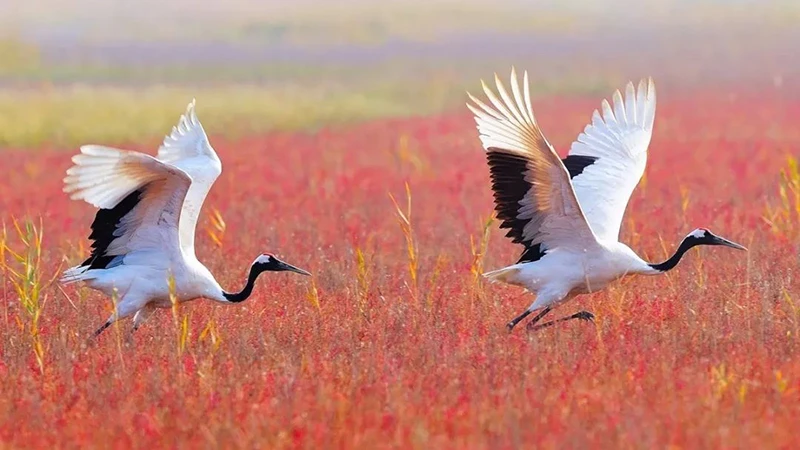A Symphony of Seasons: The Enchanting Wetlands of Yancheng (盐城)
As the winter season unfolds over the Yellow Sea wetlands (黄海湿地) , a tapestry of golden hues emerges from the lush aquatic grasses. Reeds, canes, and sedges transform into a sea of rippling gold, reminiscent of wheat waves from a bird's-eye view. For Lu Shicheng (吕士成), a renowned ornithologist in Yancheng, Jiangsu Province, the autumn and winter months are more than just a change of seasons; they are a celebration of nature's bounty and a testament to the returning avian visitors that he holds dear.
Lu Shicheng, the director of the Bird Research Center at the Yancheng Wetland Rare Bird National Nature Reserve, finds his heart swelling with pride as he watches the birds return for the winter. His affection for the season is not just for the scenic beauty but for the birds that grace the skies of Yancheng. "Autumn and winter are my favorites, followed by summer and spring," he shares. "The return of the birds, especially the ones I cherish, is a sight that fills me with joy."

The Balancing Act: Economy vs. Ecology
The journey to World Heritage status began in 2014 with a series of initiatives to restore wetlands and protect the delicate ecosystem. However, not everyone was convinced of the necessity of such conservation efforts. The question on many minds was whether economic development should take precedence over the protection of birds.
Lu Shicheng, along with many others, worked tirelessly to change these perceptions. "It was a gradual process of educating people about the importance of bird conservation," he explains. His dedication to the cause led him to become a member of the Jiangsu Provincial Science and Technology Association's Chief Science Communication Expert Service Group and a crane science communication expert for the China Wildlife Protection Association. He traveled across counties and districts to give lectures and raise awareness.
"Everyone in their own way contributed to the cause of World Heritage inscription," Lu says. "I focused on my professional duties, including protection, research, education, and project evaluation. As people learned more about Yancheng's importance as a habitat for migratory birds and its intertidal zones, support grew."
The Yancheng Wetlands, now recognized as the first and only intertidal wetland World Heritage site in China and the second globally, boast an impressive array of wildlife. The area is home to 680 species of vertebrates and over 500 species of invertebrates, including an astonishing 415 species of birds.
"No other reserve in the country has such a diverse array of bird species," Lu Shicheng proudly states. The discovery of these species was not an overnight achievement but the result of years of dedicated research and exploration across the nearly 250,000 hectares of the reserve.
The Enduring Love for the Red-crowned Crane (丹顶鹤)
Among the myriad of bird species, the Red-crowned Crane holds a special place in Lu Shicheng's heart. "The Red-crowned Crane is not just beautiful but also has a grace that is captivating, especially when it walks," he says. "Our models walk the 'crane step,' not the 'catwalk.' The crane walks in a line, while a cat crawls on all fours."
Lu Shicheng's phone has changed several times, but the ringtone remains the same—a recording of a Red-crowned Crane couple's duet he made while feeding them. "Many people ask me about the sound, and I use it as an opportunity to educate and promote the Red-crowned Crane," he shares.
His connection with the Red-crowned Crane dates back to 1985 when he first observed their wintering distribution. Since then, he has been involved in their artificial breeding and reintroduction to the wild. The process is meticulous and requires careful nurturing, from mimicking the calls of wild parents to build trust with the chicks to gradually training them to be wary of humans for their survival in the wild.
"Without wild training, their ability to survive in the wild would be compromised," Lu explains. A few years ago, one of the cranes he had helped raise returned, having integrated into a wild population. "It was a spring migration, and a year later, I heard the call of two Red-crowned Cranes. I recognized the sound and used the voice I usually communicate with them. One of them responded to my call, and the other, a wild female, sensed danger and flew away. The male crane seemed to be greeting me before following his mate."
Lu Shicheng's joy is palpable as he recounts the story. "It's like seeing a child grow up and leave home," he says. "They remember their roots and can integrate into the wild, finding their place and a mate. It's a bittersweet moment, but it's the natural cycle of life."
As Lu Shicheng approaches his 60th birthday and eventual retirement, his dedication to understanding, studying, and protecting birds will not wane. The World Heritage inscription is not just an achievement but a new beginning. "I will continue this work until I can no longer move, and even then, my thoughts will continue," he says.
In the coming February, the western population of Red-crowned Cranes will once again take flight from Yancheng, migrating north for the summer. But as with all migrations, the cycle will bring them back to their "hometown" in Yancheng the following autumn.
"Yancheng is the 'motherland' of the Red-crowned Cranes," Lu Shicheng affectionately says. "They go there to raise their young and then return to Yancheng for the winter. It's like coming home for the holidays."



